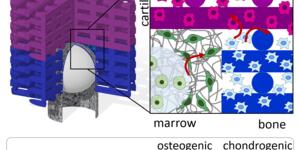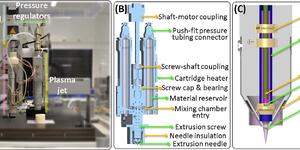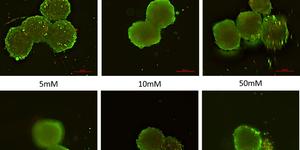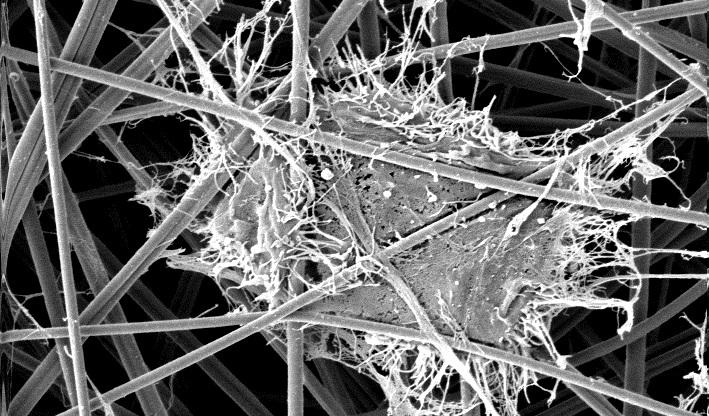News & Events
Flexible Ceramics nanofibers for bone scaffolds
More News

Integrating Biofabrication Technologies
Unlocking the secrets of osteochondral regeneration has long been a daunting challenge, with the intricate interplay between cartilage and bone presenting formidable hurdles. However, a groundbreaking approach is on the horizon, poised to redefine the landscape of tissue regeneration: multiphasic scaffolds – the cornerstone of cutting-edge strategies aimed at mirroring the complexities of the osteochondral unit and nurturing the growth of implanted bone-marrow derived stem cells (BMSCs). Yet, amidst the promise, hurdles remain. Stem cell loss during expansion in vitro and the limited control over their behavior within scaffolds both in vitro and in vivo pose formidable challenges.
Read More

Bioprinting in Space
In a new Pathfinder Open project, PULSE, we have partnered with different experts in space technology and use thereof to study how the Space environment could be working as an accelerator of ageing…
Read More

New Hybrid Biofabrication technology
Many tissues in our body display gradients. These are not only biological gradients, but also structural, physical, and chemical ones, resulting in smoother variations of mechanical properties and cell functional activity.
Read More

Kidney 3D in vitro models through bioprinting
At the Complex Tissue Regeneration department, we work hard to bridge the gap towards the dream of organs bioprinting. Step by step, we are now progressing towards understanding more and more in depth the requirements to bioprint different kidney cells, either derived from pluripotent stem cells or of adult species.
Read More

Bioprinting through Levitation
Magnetic levitation offers the possibility to place cells in a precise position in space through controlling the magnetic forces applied to magnetized cells. This new biofabrication technique, at the interface between bioprinting and bioassembly, provides new ways to create large-scale biological constructs that can be used for regenerative medicine purposes.
Read More

Published on: June 20, 2016
Category: Group Activities
Ceramcs are widespread biomaterials in the regenerative medicine field to support bone regeneration. One of the conventional limitation of ceramics is the poor mechanical properties that they typically display. In a nw exciting study that we performed in collaboration with University of Twente, we show our latest development in relation to scaffolds for regenerative medicine applications. By exploiting the versatility of electrospinning, we have created electrospun ceramic nanofibers displaying ifferent mechanical propertiesfrom the macro to the nanoscales. The resulting scaffolds can be designed with tailorable surface properties as well, which result in a differential degree of osteogenic differentiation of adult stem cells.
This development could open new avenues in the feld of bone regeneration where flexible membranes in combination with bioactive properties are desired.
For more reading:
http://pubsdc3.acs.org/doi/full/10.1021/acsnano.5b08005






